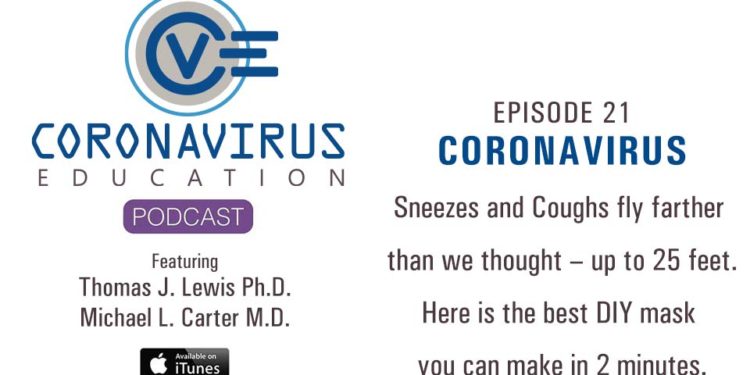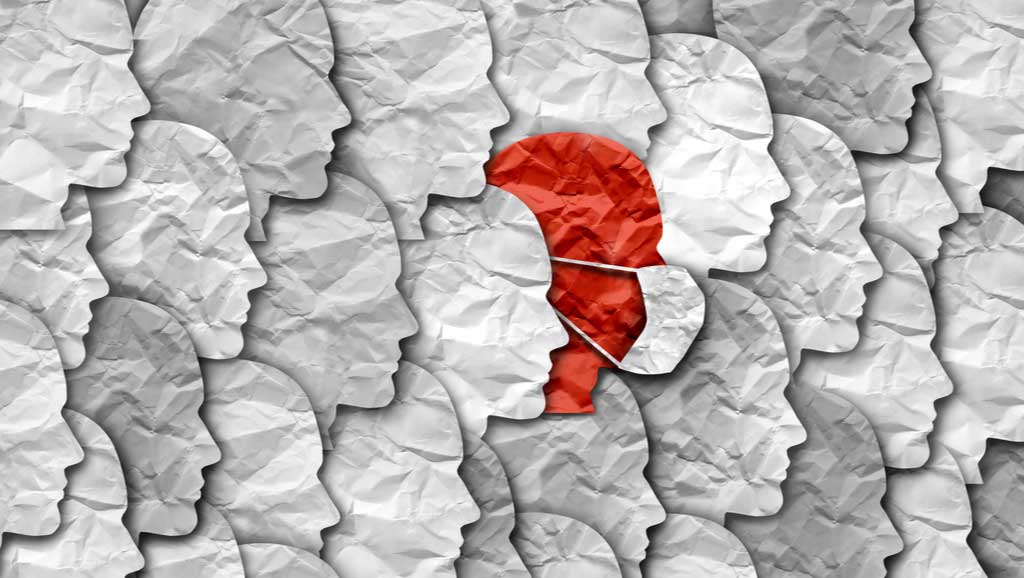Scientist have found that as many as 20% to 50% of coronaviruscoronavirus co·ro·na·vi·rus : any of a family (Coronaviridae) of single-stranded RNA viruses that have a lipid envelope studded with club-shaped projections, infect birds and many mammals including humans, and include the causative agents of MERS, SARS, and COVID-19 cases are asymptomatic. These individuals have antibodies, proteins from our immune systemimmune system : the bodily system that protects the body from foreign substances, cells, and tissues by producing the immune response and that includes especially the thymus, spleen, lymph nodes, special deposits of lymphoid tissue (as in the gastrointestinal tract and bone marrow), macrophages, lymphocytes including the B cells and T cells, and antibodies., that are a sign they have been exposed to the virusvirus vi·rus | \ ˈvī-rəs : a disease-causing agent that is too tiny to be seen by the ordinary microscope, that may be a living organism or may be a very special kind of protein molecule, and that can only multiply when inside the cell of an organism at some point but don’t develop any symptoms of being ill.
The Centers for Disease Control (CDC) estimates the number of asymptomatic COVID-19COVID-19 \ ˈkō-vid-nīn-ˈtēn : a mild to severe respiratory illness that is caused by a coronavirus (Severe acute respiratory syndrome coronavirus 2 of the genus Betacoronavirus), is transmitted chiefly by contact with infectious material (such as respiratory droplets), and is characterized especially by fever, cough, and shortness of breath and may progress to pneumonia and respiratory failure. cases is 35% of carriers. In the case of the flu, estimates are that anywhere from 5% to 25% of infections occur with no symptoms.
Some people can spread the virus even when they don’t feel sick. They have virus in their nose and throat and can be shedding the virus by coughing or through exhalation. In New York, the number of asymptomatic carriers of coronavirus is approximately 1 in 4 people.
New research suggests people with coronavirus infections may be most contagious one to two days before they start to feel ill. Scientists estimate that about 44 percent of COVID-19 cases may spread from person to person before symptoms appear.
Difference between Pre-Symptomatic and Asymptomatic COVID-19 Carriers
A pre-symptomatic case of COVID-19 is an individual infected with SARS-CoV-2SARS-CoV-2 ˈsärz-kō-ˈvē-ˈtü : the coronavirus (Severe acute respiratory syndrome coronavirus 2 of the genus Betacoronavirus) that is the causative agent of COVID-19 who has not exhibited symptoms at the time of testing, but who later exhibits symptoms during the course of the infectioninfection in·fec·tion | \ in-ˈfek-shən a : the state produced by the establishment of one or more pathogenic agents (such as a bacteria, protozoans, or viruses) in or on the body of a suitable host b : a disease resulting from infection.
Asymptomatic cases run their course without any signs of sickness through the course of infection. Asymptomatic cases are challenging to identify because individuals do not know they are infected and are not likely to be tested unless they are tested as a part of a scientific study.
A Missouri pork plant reported 340 asymptomatic positive COVID-19 cases among 373 employees and contractors who tested positive for coronavirus.
Since it is likely that people can spread this virus even when they don’t feel sick, and it’s not rare for asymptomatic people to be wandering about, controlling the spread of coronavirus will be harder.
Cruise Ship COVID-19 Cluster Study
During February 7–23, 2020, the largest cluster of COVID-19 cases outside mainland China occurred on the Diamond Princess cruise ship, which was quarantined in the port of Yokohama, Japan. Of the 3,000 passengers and crew on board, 700 tested positive for coronavirus antibodies, and about 50% of them had no symptoms of the disease when tested. Upon further follow-up, the number of asymptomatic coronavirus carriers was 20%, as more reported to have developed symptoms after being tested. In some cases, however, asymptomatic carriers actually have been found to have fluid and damaged lung tissue though they never felt ill.
Infectiousness of asymptomatic relative to symptomatic individuals
What researchers don’t know is how infectious is an asymptomatic carrier of the virus. Estimates range from 20-50% of carriers have no symptoms while closed environments such as military installations, prisons and food processing plants have been as high as 60%, and 70% among military personnel.
An Italian pre-print study that there was no difference in the potential contagiousness of carriers who were symptomaticsymptomatic symp·tom·at·ic | \ ˌsim(p)-tə-ˈma-tik : being a symptom of a disease : having the characteristics of a particular disease but arising from another cause symptomatic epilepsy resulting from brain damage or asymptomatic based on how much of the virus was found in individuals’ samples. A report in the New England Journal of Medicine on an outbreakoutbreak out·break | \ ˈau̇t-ˌbrāk : a sudden, rapid rise in the incidence of a disease of Covid-19 in a skilled nursing facility in Washington State found that viral loads were similarly high in four symptom groups, including pre-symptomatic and asymptomatic carriers. Th
When doctors tested 397 people staying at a homeless shelter in Boston, 36% came up positive for COVID-19 – and none of them had complained of any symptoms.
A recent study of 455 contacts who were exposed to SARS-CoV-2 has revealed some positive news. The study, which has not yet been peer reviewed, included hospital staff plus patients and their family members who were medically isolated. During the quarantinequarantine quar·an·tine | \ ˈkwȯr-ən-ˌtēn : the period of time during which a person or animal that has a disease or that might have a disease is kept away from others to prevent the disease from spreading : the situation of being kept away from others to prevent a disease from spreading, seven patients plus one family member appeared to develop new respiratory symptoms, where fever was the most common one. No severe acute respiratory syndromeSARS (severe acute respiratory syndrome) ˈsärz : a severe respiratory illness that is caused by a coronavirus (species Severe acute respiratory syndrome-related virus of the genus Betacoronavirus), is transmitted especially by contact with infectious material (such as respiratory droplets or body fluids), and is characterized by fever, headache, body aches, a dry cough, hypoxia, and usually pneumonia — called also severe acute respiratory syndrome coronavirus 2 (SARS-CoV-2) infection was detected in 455 contacts.
Antibodies as Protection from Reinfection of Coronavirus
Most people are developing antibodies after recovery from COVID-19, likely even those without symptoms. It is a reasonable assumption, from what scientists know about other coronaviruses, that those antibodies will offer some measure of protection from reinfection.
Because the presence of antibodies may offer protection from future infection, herd immunity – when a population is immune to an infectious disease – will be at least part of the end of the pandemicpandemic (pan·dem·ic) : an outbreak of a disease that occurs over a wide geographic area and affects an exceptionally high proportion of the population : a pandemic outbreak of a disease. facing us currently. However, while some countries are considering issuing “immunity passports” for individuals with antibodies, at this point in the pandemic there is not enough evidence about the effectiveness of antibody-mediated immunity, according to the World Health Organization.


No comments yet. Be the first one to leave a thought.